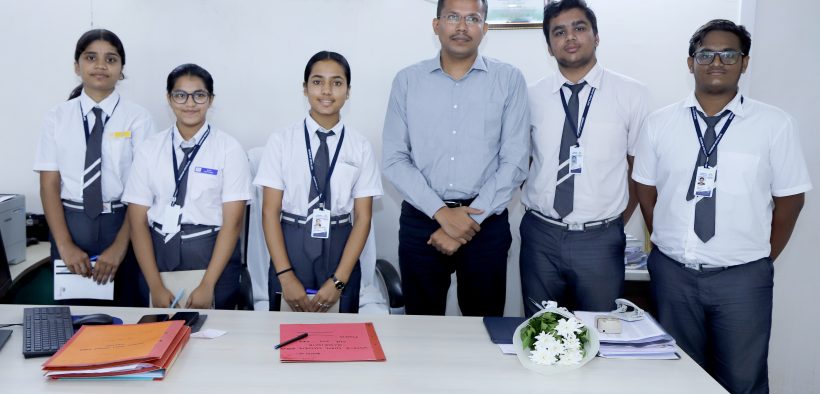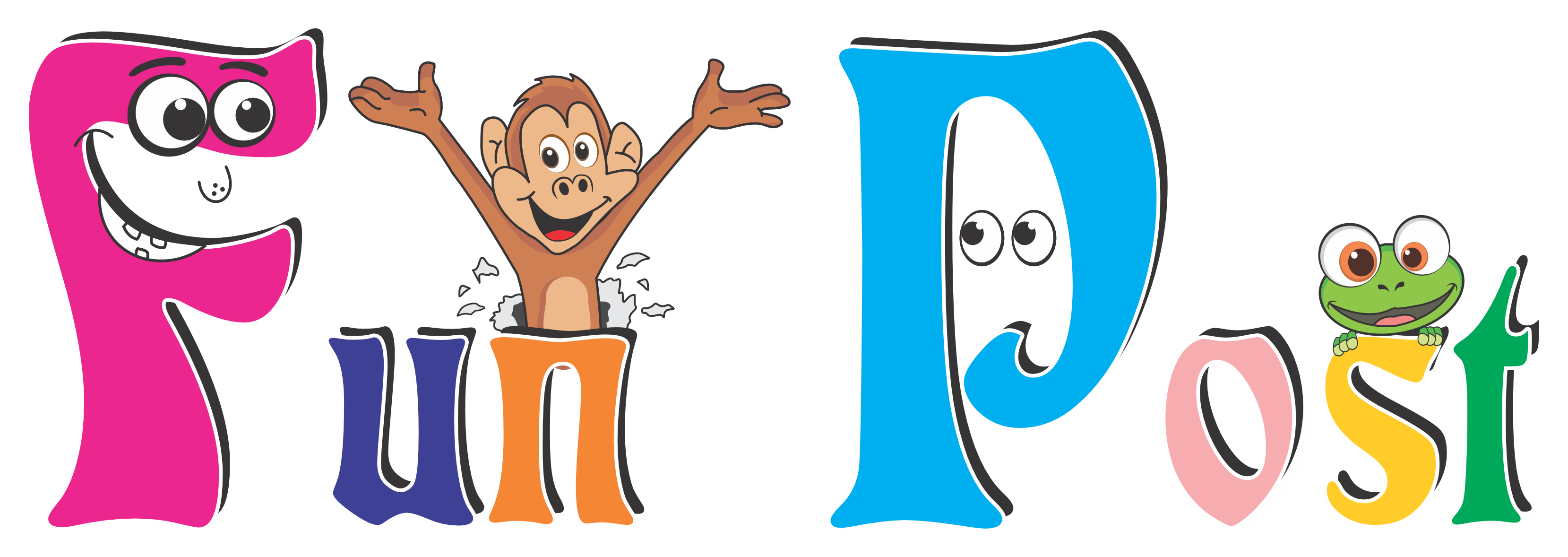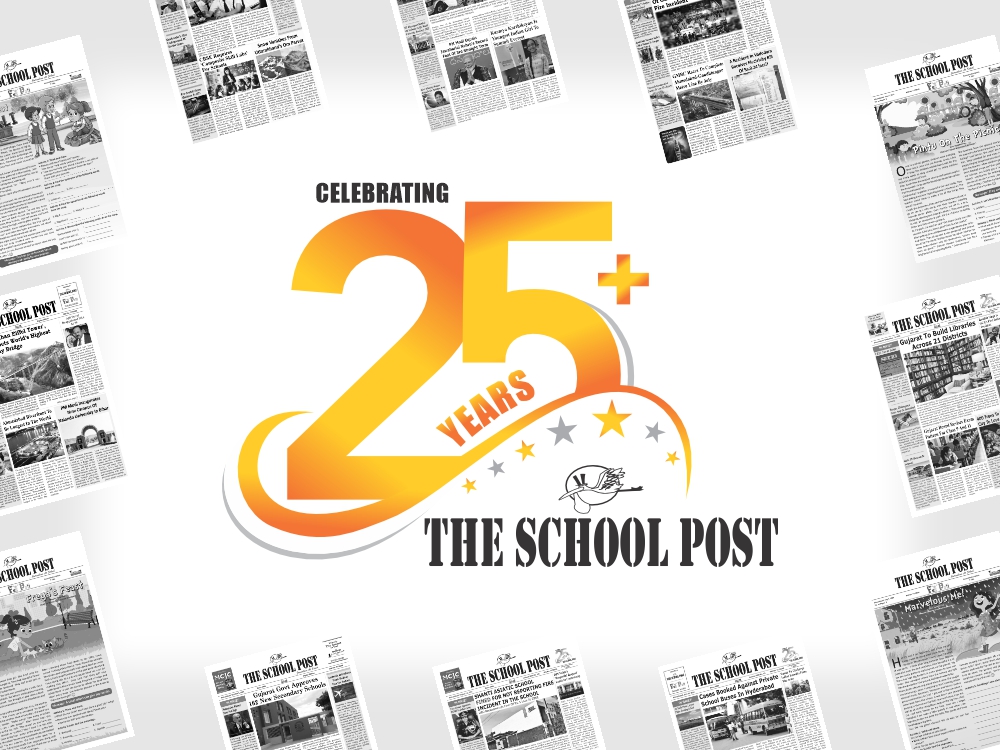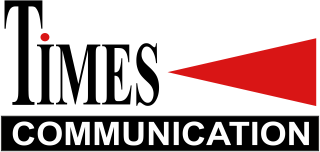Interview with Mr. J.J. Patel- RTO Ahmedabad
Share

Insights into RTO Functioning and Traffic Management

As part of the Journalism At School, a flagship programme by The School Post since its inception in 1998, a team of student reporters representing the newspaper, visited the office of Mr. J.J. Patel in Ahmedabad to gain insights into the functioning of the Road Transport Office (RTO), traffic regulations, and the enforcement of these rules. The reporting team comprised of YUG PATEL – STUDENT XII SCIENCE, VANSHRAJ PARMAR – STUDENT XII SCIENCE, GEET DEDHAIA – STUDENT XI COMMERCE, CHANCHAL SHARMA -STUDENT XI HUMANITIES & NIKITA SONI- STUDENT IX STUDYING IN SHRI RAM VIDYALAYA, AHMEDABAD.
The discussion covered various aspects of traffic management and the challenges faced in ensuring road safety. Below is the conversation between the students and Mr. Patel.
Yug Patel: What is the future of electric vehicles (EVs) in a country like India, which faces infrastructure challenges and high levels of environmental pollution?
J.J. Patel: The government is working on promoting electric vehicles by building charging stations across the country. Additionally, efforts are underway to reduce the reliance on lithium and silicon in EV batteries, aiming to make them more eco-friendly by minimizing radiation and other environmental impacts. This is a positive step towards a cleaner and greener future.
Yug Patel: I’ve noticed many cars with dashcams. Are they important, and if so, why?
J.J. Patel: While dashcams aren’t mandatory in India, they are certainly useful. Dashcams can record the entire driving experience, which is helpful in case of accidents or disputes. The footage can provide evidence and ensure that the innocent party is not wrongfully punished.
Vanshraj Parmar: Despite numerous traffic rules for road safety, many people don’t follow them. Is this due to loopholes in enforcement or a lack of awareness?
J.J. Patel: Road safety laws are in place and strictly enforced. Violations result in hefty fines, and licenses are even cancelled after repeated offences. Around 6,000 drivers had their licenses revoked after accumulating three fines. Awareness programs are continuously conducted to educate both drivers and pedestrians. Additionally, the speed of heavy vehicles is monitored, and these vehicles are under constant surveillance.
Vanshraj Parmar: Has artificial intelligence (AI) improved traffic conditions and ensured people follow the rules?
J.J. Patel: Yes, AI has played a significant role in improving traffic management. It is currently used in signal systems and helps ensure smooth traffic flow. As India continues to develop, we expect the full potential of AI in traffic management to be realized by 2050.
Chanchal Sharma: Why do commercial vehicles have yellow number plates, and what happens if someone uses a white plate for commercial purposes?
J.J. Patel: The yellow number plates distinguish commercial vehicles from private ones. If someone uses a white plate for commercial purposes, they face a hefty fine and are required to switch to a yellow plate.
Chanchal Sharma: Is there a regulatory authority that sets fares for school buses and vans, like there is for rail and bus fares?
J.J. Patel: In the case of school buses or vans, the fare is mutually agreed upon between the driver and the parents. The school management does not intervene in this matter.
Nikita Soni: What is the purpose of the separate BRTS bus lanes, and has this system been effective?
J.J. Patel: Ahmedabad has around 2 lakh two-wheelers and 40 lakh four-wheelers, leading to traffic congestion, especially during peak hours. The BRTS lane was introduced to encourage public transport use, reduce traffic, and provide a faster mode of transportation. While the system has helped, there’s still room for improvement.
Nikita Soni: I’ve noticed different road markings—broken lines, continuous lines, and double lines. What do they mean?
J.J. Patel: Broken lines indicate that overtaking is permitted when safe. Continuous lines mean overtaking is not allowed, usually seen at high-traffic areas or curves. Double continuous lines prohibit overtaking, crossing, or turning.
Geet Dedhaia: With the increasing number of vehicles, traffic congestion has worsened, especially in older parts of cities. How is this issue managed during emergencies?
J.J. Patel: The traffic police and local authorities are highly responsive during emergencies. They actively work to clear traffic, ensuring that vehicles like ambulances can pass through without delay.
Geet Dedhaia: If we observe traffic violations, where should we report them?
J.J. Patel: For traffic-related complaints, you can contact the city traffic police. The RTO should be notified if the issue concerns vehicles, like commercial use of white plates. Both the traffic police and the RTO handle complaints regarding over speeding, underage driving, and other road safety issues.
This engaging interview with Mr. Patel provided valuable insights into the critical role the RTO plays in traffic management and road safety, sparking curiosity and awareness among the students.
[Best_Wordpress_Gallery id=”86″ gal_title=”Interview jjpatel”]















